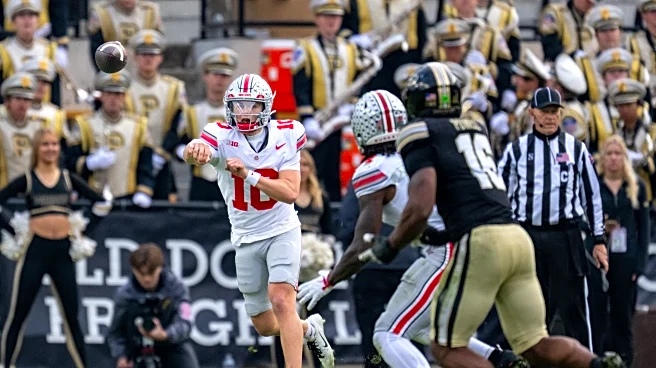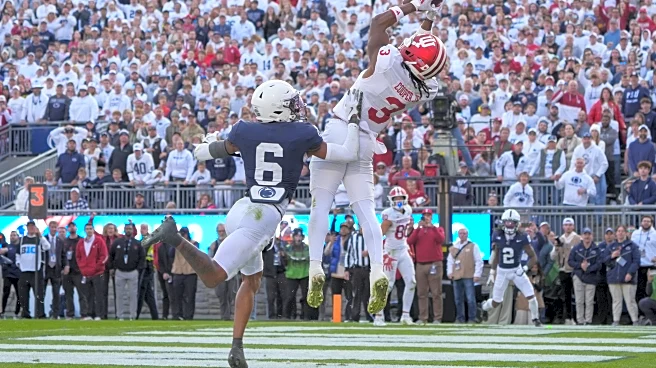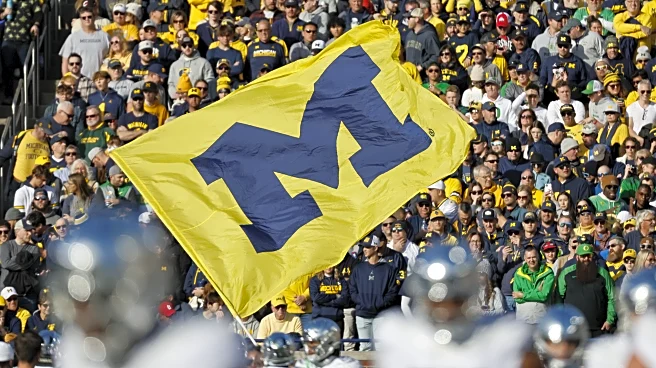What's Happening?
The College Football Playoff rankings remain stable at the top, with Ohio State, Indiana, Texas A&M, Alabama, and Georgia retaining their positions. Miami has climbed to No. 15, becoming the highest-ranked
ACC team after defeating Syracuse. Despite a down season for the ACC, Miami's position ensures the conference's representation in the playoff due to the 12-team bracket's structure. Texas Tech advanced to No. 6 following a victory over BYU, which dropped to No. 12. The rankings reflect the committee's approach, which does not always prioritize head-to-head results.
Why It's Important?
The stability at the top of the rankings highlights the dominance of certain teams, reinforcing their playoff prospects. Miami's rise is significant for the ACC, ensuring the conference's presence in the playoff despite challenges. The rankings influence team strategies and fan expectations as the regular season nears its conclusion. The committee's decisions impact perceptions of team performance and can affect recruitment and funding for programs. The rankings also set the stage for potential matchups in the playoff, shaping the competitive landscape of college football.
What's Next?
With three weeks remaining in the regular season, teams will focus on securing their positions in the rankings and preparing for conference championships. Miami will aim to maintain its standing as the top ACC team, while other teams will strategize to improve their rankings. The committee's approach to rankings may continue to evolve, influencing future decisions. Fans and analysts will watch closely as teams vie for playoff spots, anticipating potential shifts in the rankings.
Beyond the Headlines
The rankings reflect broader trends in college football, including the impact of media and committee decisions on team reputations and athlete careers. The emphasis on rankings can drive changes in coaching strategies and player development, affecting the long-term success of programs. The playoff system's structure highlights the importance of conference representation, influencing the dynamics of college sports governance.














